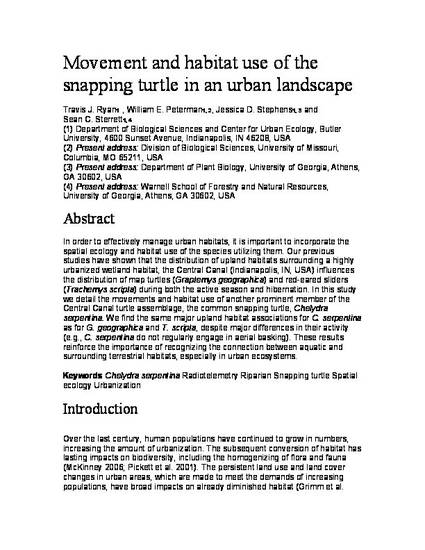
In order to effectively manage urban habitats, it is important to incorporate the spatial ecology and habitat use of the species utilizing them. Our previous studies have shown that the distribution of upland habitats surrounding a highly urbanized wetland habitat, the Central Canal (Indianapolis, IN, USA) influences the distribution of map turtles (Graptemys geographica) and red-eared sliders (Trachemys scripta) during both the active season and hibernation. In this study we detail the movements and habitat use of another prominent member of the Central Canal turtle assemblage, the common snapping turtle, Chelydra serpentina. We find the same major upland habitat associations for C. serpentina as for G. geographica and T. scripta, despite major differences in their activity (e.g., C. serpentina do not regularly engage in aerial basking). These results reinforce the importance of recognizing the connection between aquatic and surrounding terrestrial habitats, especially in urban ecosystems.
The final publication is available at Springer via http://dx.doi.org/10.1007/s11252-013-0324-1.
